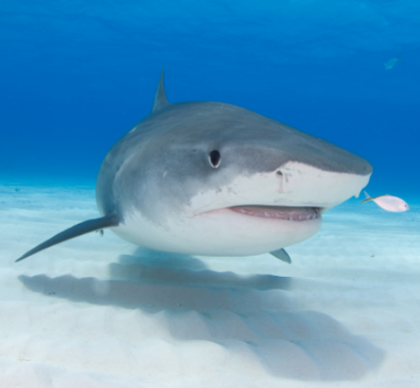
IUCN Red List: 37 percent of sharks are threatened
A new report from the International Union for the Conservation of Nature (IUCN) highlights the growing pressures on the world’s marine species, noting that 37 percent of sharks and rays are now threatened with extinction. While the primary issue is overfishing, sharks and rays are also vulnerable to habitat loss and climate change.
The Red List of Threatened Species was updated on Saturday at the IUCN World Conservation Congress in Marseille. Of the 138,374 species that are now included on the list, 28 percent are threatened with extinction.
The Komodo dragon has moved from Vulnerable to Endangered on the Red List. The experts found that the future effects of climate change and human activities pose the biggest threats to the species, which is endemic to Indonesia. Rising temperatures and sea levels are expected to reduce the Komodo dragon’s habitat by at least 30 percent in the next 45 years.
“Komodo dragons were first introduced to the British public by Sir David Attenborough just 60 years ago, on BBC’s iconic series Zoo Quest for a Dragon with ZSL,” said Dr Andrew Terry, conservation director at the Zoological Society of London.
“The idea that these prehistoric animals have moved one step closer to extinction due in part to climate change is terrifying – and a further clarion call for nature to be placed at the heart of all decision making on the eve of the COP26 in Glasgow.”
The IUCN Red List update reveals some good news as well. Four commercially-fished tuna species, including the Atlantic bluefin tuna, Southern bluefin tuna, albacore and yellowfin tuna, are on the path to recovery. The enforcement of regional fishing quotas over the last decade have boosted some tuna populations.
Despite global improvement at the species level, however, the number of species that are at high risk continues to grow, according to the IUCN. The agency said that many regional tuna stocks remain severely depleted.
“These Red List assessments are proof that sustainable fisheries approaches work, with enormous long-term benefits for livelihoods and biodiversity. We need to continue enforcing sustainable fishing quotas and cracking down on illegal fishing,” said Dr. Bruce B. Collette, Chair of the IUCN SSC Tuna and Billfish Specialist Group. “Tuna species migrate across thousands of kilometers, so coordinating their management globally is also key.”
Dr. Malin Rivers of Botanic Gardens Conservation International heads the Global Tree Assessment to compile extinction risk information on the 58,497 tree species worldwide. He says that thousands of trees species assessments have been added to the IUCN Red List this year, including trees from over 186 countries.
“In addition, more than 1,000 species identified as impacted by logging and wood harvesting, such as Dipterocarps, ebonies, rosewoods and many others, have also been assessed for the first time this year,” said Dr. Rivers.
“With every tree assessment, added to the IUCN Red List, we continue to tell the story for the word’s threatened tree species, and provide the essential information for taking effective conservation action.”
–—
By Chrissy Sexton, Earth.com Staff Writer












